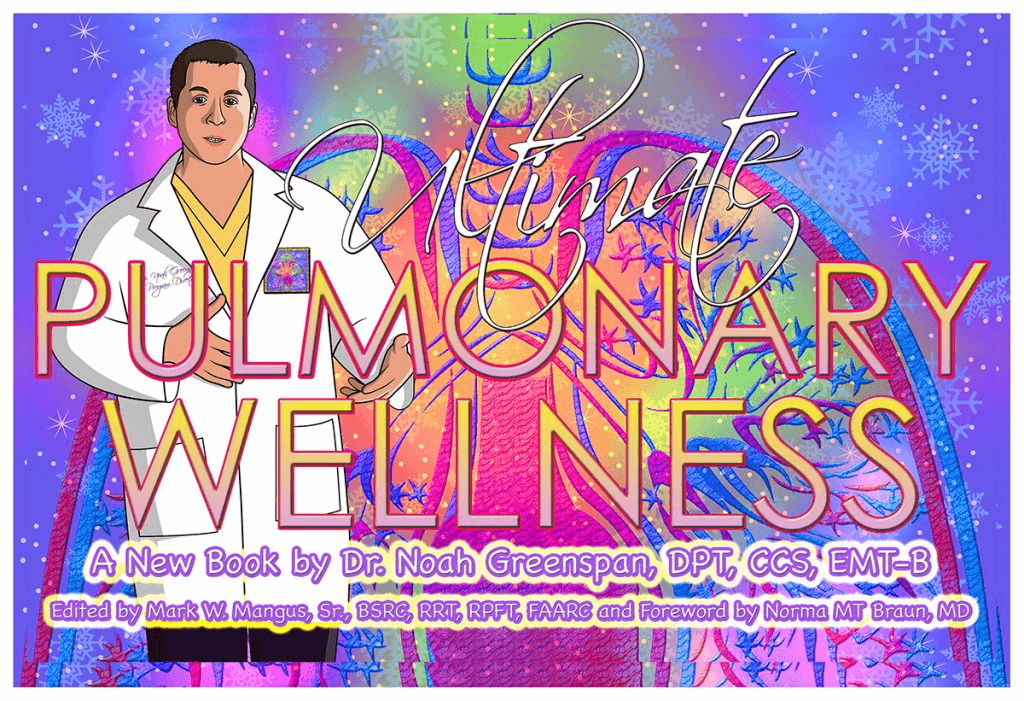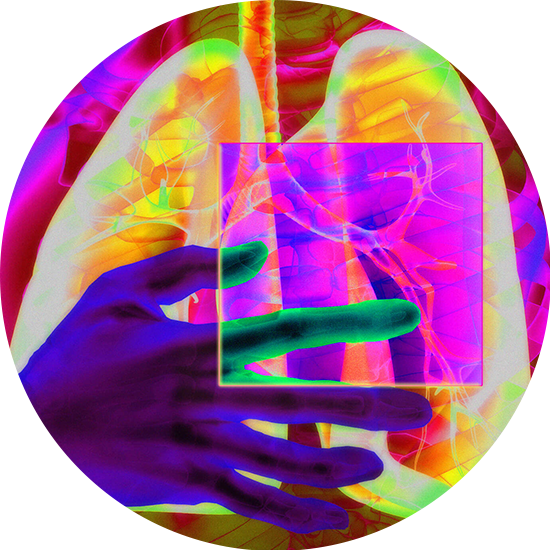
Activities of Daily Living
Supply and Demand
Over the course of any given day, some activities will naturally be more demanding than others. As an example, stair climbing is one of the more challenging activities that most of us encounter in our everyday lives and requires significantly greater effort than walking uphill. Walking uphill requires significantly greater effort than walking on a flat surface and each of those activities requires significantly greater effort than sitting on the couch watching TV or sipping a martini; or sitting on the couch watching TV and sipping a martini (or sitting on a martini watching the couch).
In addition to the activity itself, we must also consider the conditions under which each activity takes place. Sticking with our stair-climbing example, most people find it much more taxing to walk up a flight of stairs on a hot, humid day or after indulging in a big meal as compared to when weather conditions are more favorable; or shortly after you’ve taken your rescue inhaler. In addition, various other factors can also negatively impact your breathing, such as anxiety, indoor and outdoor air pollution; or having a cold, flu, or pulmonary exacerbation, among many, many others. As I say over and over (and over) again, breathing is multi-factorial.
With this concept in mind, it can be helpful to observe the activities that cause you the most difficulty, as well as the related demands they put upon your respiratory, cardiovascular, muscular, and skeletal systems…and your emotional mind. It is also helpful to understand that there are ways we can increase the supply side of the equation as well, using various strategies and techniques. The purpose of this chapter is to help you evaluate your own activities of daily living (ADL) and to understand how these various factors affect you, as well as what you can do to stack the odds in your favor.
Keep in mind that you won’t always be able to change the physical requirements of an activity, and even more rarely will you be able to change the external environment. However, once you become attuned to which factors have the greatest impact on your performance, both positive and negative, you will be able to incorporate practices such as controlled breathing techniques, optimal timing of your medications, and using your supplemental oxygen to your greatest advantage; in addition to avoiding respiratory triggers such as pollution, temperature, and weather extremes; and allergens.
Just because an activity makes you uncomfortable doesn’t necessarily mean that it must be avoided completely, and in many cases, quite the opposite is true. It shouldn’t be. Remember that your body gets good at what you ask it (or don’t ask it) to do, and over time, gradually increasing these difficult activities can improve your ability. However, to improve your performance, you will need to find ways to become more efficient and effective at performing these activities, so you can once again regain control of your breathing and your life; in other words, you will need to work smarter, not harder. Let’s look at some of the factors that play a role in breathing and activity.
NOTE: As always, please clear any intended lifestyle changes with your physician.
Aerobic Capacity
Aerobic capacity refers to the efficiency and effectiveness with which your body utilizes oxygen to support physiologic activity. This is largely based on three main factors.
- How effectively your lungs move air in and out
- How effectively your heart pumps blood
- How efficiently your skeletal muscles utilize oxygen
As I have mentioned previously, a problem in any one of these areas can impact your performance. However, if you have problems in more than one area, such as heart and lung disease, you will likely have significantly greater difficulty than either one alone.
Air Supply and Oxygen Demand: Respiratory Mechanics and Metabolism
For us to take a breath, the brain sends a signal down the spinal cord to the phrenic nerve, which innervates the diaphragm, activating it to contract downward. This downward contraction creates a negative pressure in the thoracic cavity, causing the lungs to fill with air.
People with restrictive lung diseases like PF and other ILD’s typically have difficulty with the inhalation phase, i.e., moving air in. However, inhalation and exhalation are like Yin and Yang, meaning that if you have difficulty with one phase, it will also affect the other, with the result being the same; shortness of breath, decreased muscle strength and decreased activity tolerance. This explains why you can be short of breath even in the presence of normal or even high oxygen content in the blood, i.e., saturation.
In the case of a strictly mechanical problem, supplemental oxygen will not help you. Instead, the solution lies in performing the controlled breathing techniques, clearing your secretions, and taking your rescue inhaler (if you have one), in the short term; and gradual, but progressive exercise, over the long term. Respiratory mechanics can affect metabolism and oxygen saturation. In the case where your shortness of breath is accompanied by a decrease in oxygen saturation, you will benefit from supplemental oxygen, adjusting or titrating the amount based upon your pulse oximeter readings. In fact, if your oxygen saturation falls below 90%, I would strongly recommend speaking with your doctor about supplemental oxygen use. We will discuss this in greater detail in the next chapter on oxygen.
Finally, on the flip side, there are a group of people who are hypoxic, yet do not feel particularly breathless. This often occurs in people who have been living with a respiratory disease for a long period of time as they have become desensitized to their dyspnea. In this situation, you should also be using supplemental oxygen; adjusting or titrating the amount based upon your oximeter readings. If your oxygen saturation is in the nineties, preferably 93% plus, you’re good. If your saturation is below 90%, turn up the oxygen or switch from a cannula to a mask. This is what I mean when I talk about “relying on your instruments,” as opposed to adjusting based solely on how you are feeling at that moment.
Energy Cost and Metabolic Equivalents
MET level, or metabolic equivalents are a measurement of physiologic workload or exercise tolerance, in other words, the energy cost of the activity. Every activity comes with its own metabolic price tag, which corresponds to the amount of oxygen consumed. Activities that are less than three METs are considered light. Activities between three and six METs are considered moderate and activities that are six METs or greater are considered heavy or vigorous activity.
Below are some sample activities and their corresponding MET level. Please keep in mind that these are rough estimates, and many factors can affect individual MET level.
- 1 MET: energy expenditure at rest, lying in bed
- 1.0 to 1.9 METs: eating, grooming, shaving (sitting), writing
- 2.0 to 2.9 METs: cooking, making the bed, showering (warm), dressing (sitting)
- 3.0 to 3.9 METs: vacuuming, showering (warm), dressing (standing), walk 3 mph
- 4.0 to 4.9 METs: gardening, swimming,
- 5.0 to 5.9 METs: Showering (hot, standing)
- 6.0 to 6.9 METs: stair climbing (down)
Activities of Daily Living
When I polled the members of our Ultimate Pulmonary Wellness Facebook Group, the three activities that were reported to be most difficult were stair climbing, walking uphill, and walking quickly…by a landslide. As I mentioned at the beginning of this chapter, walking up a flight of stairs requires significantly more effort than walking on an incline i.e., uphill; and walking uphill, sometimes even if it’s only a slight incline, requires significantly more effort than walking on flat ground.
Walking
Like breathing itself, locomotion in all its forms is a multi-factorial process that both affects and is affected by many variables. Walking increases your body’s demand for both air (mechanical) and oxygen (metabolic). For that reason, it is important for us to have strategies at our disposal to either reduce the energy demands of the activity or to increase the supply of air and oxygen.
Other factors to consider include: the longer and steeper the stairs, the greater the metabolic demand. The faster you walk, the greater the demand. Carrying something while you walk or walking and talking will also increase the demand; and just in case you’re sensing a theme here, the more challenging the activity, the greater the demand. Emotional factors like anxiety can also play a role; both affecting and being affected by breathing and activity, decreasing the supply of air and increasing the metabolic demand.
Here are some techniques you can incorporate when you’re walking:
Practice “the Breathing.”
When it comes to walking, by far, the greatest tools you have are your controlled breathing techniques. Diaphragmatic, pursed lip and paced breathing will give you greater breath control, allowing you to walk more. Time your breathing with your walking, with each step being one count. Try breathing in for two steps and out for four steps or whichever pattern you find most beneficial. The same is true for stair climbing, using each step as a count of one. If this is too vigorous, you can modify the activity even further. Instead of one step for each count, breathe in while standing still and exhale as you start to climb again.
Pace Yourself!
Walk as slowly as you need to maintain control of your breathing. Walking at a slower pace will reduce the metabolic demand of the activity. If you’re still having trouble maintaining control of your breathing, stop walking and perform the techniques for recovery from shortness of breath. Once you have regained control of your breathing, you can start walking again…slowly.
Take your “rescue” medication before exercise or activity.
Taking your rescue medication; typically, a short-acting bronchodilator; increases the supply of air and oxygen by opening the airways, allowing you to take a deeper breath. Taking it approximately 15 minutes before exercise should help you have your best workout. One point that you may ask your doctor about is this. Although bronchodilators do not typically demonstrate a benefit to patients with restrictive lung disease when you take a pulmonary function test (PFT), many anecdotally report symptomatic relief from them. Again, you can ask your doctor if he, she, or they think it might be worth a try.
Increase your supplemental oxygen as necessary.
If your oxygen saturation drops below 90%, increase the liter flow or switch to a mask. Again, we will discuss this further in the next chapter.
Use a shopping cart or rolling walker.
Using a shopping cart or rolling walker closes the chain, improving respiratory mechanics; not only decreasing the metabolic demand of the activity, but also increasing the supply of air and oxygen.
Relax!!!
I realize that this is usually easier said than done. However, try to prepare yourself mentally and emotionally for the activity. As an example, before you start up a flight of stairs, take a moment or two to compose yourself and start your controlled breathing techniques proactively, before starting up the stairs.
Shhh…
Many people find walking and talking difficult. Talking is essentially continuous exhaling, which will quickly reduce your available supply of air. Pace your breathing so that you are speaking during what would normally be the exhalation phase, and by taking slow, deep breaths in between speaking, while the other person is talking. Think of it as an opportunity to work on your listening skills.
Lifting and Carrying
Lifting and carrying, especially heavy objects, can significantly impair your breathing from both a supply and demand perspective. First, lifting and carrying will increase the metabolic demand to varying degrees, depending upon the load. As the load increases, so will the metabolic demand. In addition, lifting and carrying can also decrease supply. Imagine carrying a paper bag of groceries across your chest in front of you. This compresses the thorax, mechanically preventing you from taking a deep breath.
Now think about carrying two plastic bags, one in each hand. This load pulls down on the thorax and the ribcage, increasing the amount of resistance required by the diaphragm to elevate the ribcage, again, preventing you from taking a deep breath. Again, the same factors, including walking on a flat surface, walking on an incline, and climbing stairs, will further increase the metabolic requirements.
Bending and Reaching
Bending and reaching compress your thoracic and abdominal cavities like an accordion, increasing the pressures against which, the diaphragm must contract, preventing you from taking a deep breath. There is further compression of the thorax, preventing you from taking a deep breath, and preventing the lungs from filling with air.
Another task people regularly report difficulty with is bending down to tie their shoes. This is due to thoracic and abdominal compression. Instead of trying to breathe while you are down there, prepare yourself by taking a deep breath in before you bend and slowly and gently exhale through pursed lips as you bend down and tie your shoe. As you start to run short on air, rise again as you take a deep inhalation. Then exhale through pursed lips as you bend over to tie the other shoe.
Showering and Bathing
Many people find showering and bathing extremely difficult. For both activities, there are many factors—almost like an “all of the above” situation. Increased humidity in the bathroom due to the hot water and steam can make you work harder to move air in and out. Think of inhaling and exhaling that thick air as being like drinking a milkshake through a narrow straw as compared to plain water. Instead of hot, use lukewarm or tepid water and leave the bathroom door either cracked or completely open.
Another issue has to do with the use of the upper extremities to wash; especially overhead as you do when you wash your hair. Overhead activity puts the diaphragm and the respiratory muscles at a very poor mechanical advantage, significantly increasing your shortness of breath. To decrease the work of breathing as well as the overall metabolic demand of showering, I would suggest using a shower chair or bench, as well as a hand-held shower. This will allow you to relax and focus on your breathing as you sit and wash your body, as opposed to constantly worrying about shortness of breath or worse, slipping and falling. And while we’re on the subject, let me tell you that those hand-held showers are delightful, and throw your cannula over the top of the shower and turn your oxygen up as high as you need to
Dressing
Getting dressed goes hand in hand with bathing. For many of the same reasons that bathing is difficult, drying yourself off and dressing can be equally, if not more difficult. Again, overhead, open chain movements like toweling dry or putting on a shirt put the diaphragm at a mechanical disadvantage. Try using terrycloth or microfiber towel or bathrobe to do the drying for you, while you sit and catch your breath.
As you are getting dressed, use your controlled breathing techniques, coordinating movement with exhalation and inhaling in between. As an example, inhale for a count of two. Exhale for a count of four as you put one arm in the sleeve. Inhale for a count of two. Exhale as you put your other arm in the other sleeve. The same principles apply to pants, socks, shoes, etc.
Cleaning and Housework
Chores like laundry (bending, lifting, carrying, reaching); vacuuming (bending, pushing, pulling, reaching); and making the bed (bending, pulling, reaching), are also difficult for people with respiratory problems due to the increased physical and metabolic demands, positioning, and many other challenges. Add to these issues, the potential for exposure to unhealthy environmental and chemical triggers that can add insult (and inflammation) to injury. Tasks like dusting, vacuuming, sweeping, mopping, etcetera, etcetera expose us to all kinds of potential bacteria, viruses, allergens, and other respiratory triggers in the form of dust, debris, mold, insects and animals, and their excrement; as well as the cleaning supplies themselves, among others. Any of these factors can quickly trigger the inflammatory response, constricting the airways and increasing the production of mucus, and the work of breathing. They can also make us sick. If in doubt, please don’t do it yourself. At a minimum, wear a mask, ventilate the room, use an air purifier, and please choose your cleaning products carefully, opting for hypo- or ideally, non-allergenic.
Sexual Activity
Although not often talked about, sex is also a big concern for many patients. Sexual activity involves an increased mechanical and metabolic demand for air, oxygen, circulation, and aerobic capacity due to the elevated workload. In addition, there are also complex emotional aspects that can contribute to the situation, for better and for worse. Sex can be a wonderful and enjoyable experience for many people, or an extremely anxiety-provoking situation for many others; especially if you are concerned about being able to breathe, in addition to enjoying yourself and pleasing your partner.
As with other activities, a little preparation beforehand will go a long way. Think about which positions will allow you to breathe more easily while decreasing the physical and emotional demands of the activity. As an example, lying on your back may decrease your demand for air and oxygen, reducing the aerobic requirements of the activity. However, you may also need to consider how your breathing will be affected by the weight of your partner. In that case, you may want to try other positions. If you need oxygen, turn it up! If you have a rescue inhaler, ask your doctor if you can use it proactively.
Now, while I’m not trying to give you the Kama Sutra for Pulmonary Patients, my suggestion would be for you and your partner to experiment with various positions and practices to figure out what works best for both of you. Although it may be uncomfortable at first, communication is key to finding strategies that meet both partners’ needs. And breathe! Utilize all the controlled breathing techniques, before, during, and after sex. Just be sure to skip the requisite after–sex cigarette.
Energy Conservation versus Energy Maximization
At first glance, the difference between energy conservation and energy maximization seems like nitpicking or semantics. However, there are significant differences between the two ideas: with mindset often being a major factor. In my experience, “traditional” energy conservation techniques typically focus on teaching people how to modify the activity in a downward direction to accommodate the metabolic demand. Paradoxically, while this downgrade may make the activity more manageable for the moment, it will ultimately make it become more difficult over time. Remember that your body gets good at doing what you ask it to do.
Finally, while I concede that there will be times that your limitations may get the best of you, I would much rather you take the steps to up your game to meet this increased demand as opposed to automatically downgrading all your activities. I assure you that I am not minimizing your struggle. I am encouraging you not to sell the farm too quickly. My goal is to encourage you to keep trying, even when things get tough. Perhaps you need to work smarter, not harder.
Order Your Book Now!

Purchase Your Signed Copy Today!
- Within the United States: $27.50 including Postage and Handling!
- Outside of the US: $52.00 including Postage and Handling! (Sorry. We know that is more than the cost of the book but we cannot ship for less.)
Subscribe To Our Newsletter For Upcoming Offers
- Be the first to know about new webinars, exclusive offers, and podcasts.























